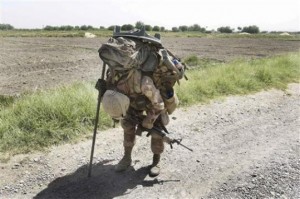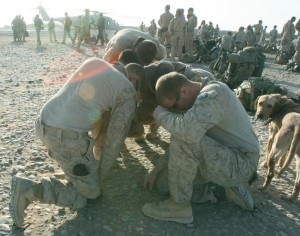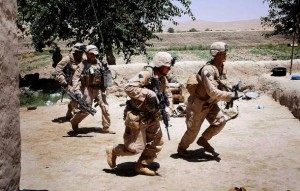Operation Khanjar: What do the people think?
BY Herschel SmithSo what do the residents of the Helmand Province think about the initiation of Operation Khanjar? The Asia Times gives us a fairly sweeping view of it.
“Our entire village is surrounded,” said Sefatullah, a resident of a village in Nad Ali called 31 West. “The foreigners are driving their tanks in our fields. They will not let anyone come out of their houses.”
A resident of Nawa told a similar tale. “There are more than 60 tanks in our fields,” said Sher Agha. “Why can’t they drive on the roads? Do they think they are going to find Taliban in our fields? They are causing enormous damage.”
The Taliban have offered little resistance so far, although some residents reported the sound of heavy machine-gun fire, and one said that a few rockets had landed on his village in Nawa.
“There is no fighting yet, but there have been a huge number of airplanes patrolling,” said Sharafuddin, in Nawa. “I can see the Taliban. They are sitting on the riverbank, just watching, and preparing themselves for the fight.”
In Lashkar Gah, the provincial capital, life is going on normally, although the sound of explosions can be heard faintly, according to residents and foreign visitors. Shops are open, and people are out on the streets …
While there are those who are angered by the heavy foreign troop presence, significant numbers of locals are tired of living under the Taliban, and are relieved that the insurgents may soon be gone.
“This operation will be good if done correctly,” said Abed, a resident of Nawa. “We would love to live in peace, and without the Taliban authoritarianism.”
According to Abed, the Taliban have left his area and are congregating in Khosrabad village. “They are just waiting for the fight,” he said. “I am very happy that they are gone. We have a lot of houses here, and if anyone drops a bomb it will kill a lot of people.”
A resident of Khosrabad, who did not want to give his name for fear of the Taliban, confirmed that there was now a heavy insurgent presence in his village. “The Taliban are telling people to leave, to get out of their houses,” he said. “This is the opposite of what they usually do. They used to make people stay, to use them as shields.”
The Taliban, for their part, say they are preparing for battle. “We will fight until our last breath,” said Mullah Abdullah, a local Taliban commander in Helmand, who returned to Nawa just a few days ago. He was seriously injured in a skirmish with international forces in May, and had gone to Pakistan for treatment. He is now back, and ready for jihad …
Helmandis, meanwhile, are a bit puzzled about all the hardware. The Taliban cannot be defeated with a frontal assault, they say. Guerrilla warfare, or so-called asymmetric combat, is hard on the larger army, and on the civilians caught in the middle.
“The foreigners are bragging that they will get rid of the Taliban. Give me a break!” said one angry resident in Nad Ali. “They could bring 70,000 soldiers, [but] they still would not be able to do it. One Taliban fighter attacks them from inside a house, then he escapes. The Taliban are never going to get together all in one place, to have a major fight. The only thing they will be able to do is kill civilians.”
It’s understandable, this notion that the Helmandis must lecture the Marines on whether to do a frontal assault of otherwise. They are unaware that the Marines have spent the last five years in the Anbar Province of Iraq.
Might I observe how positive this reaction is overall compared to the Anbar Province? In 2004 the Marines’ entrance to Anbar started with difficulty. This is better, and while the Taliban will likely come with asymmetric attacks, the Marines are prepared. The bluster about the Taliban readying themselves for the offense is of course ridiculous. They mass troops against smaller sized U.S. forces simply because the U.S. tactics, techniques, procedures, training and discipline is so superior. As they have lost significant casualties even in these situations, expect IEDs, sniper fire and other guerrilla tactics. And the Taliban in Helmand will lose.






